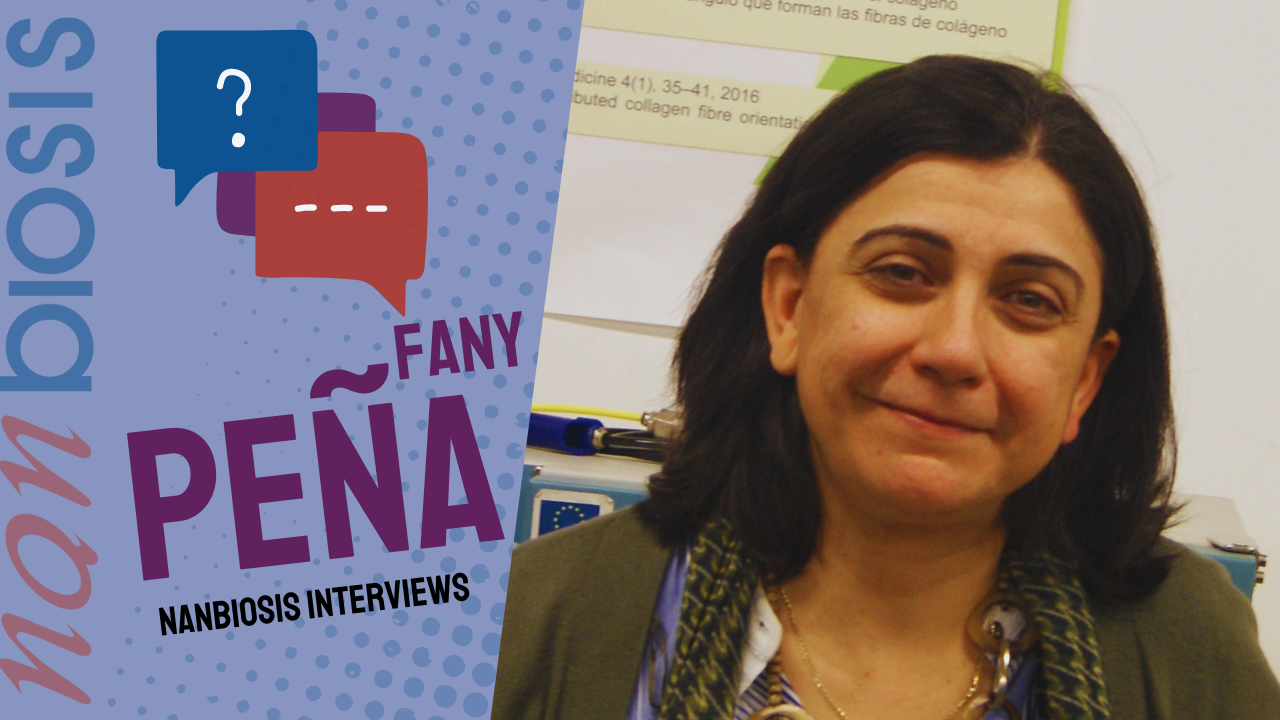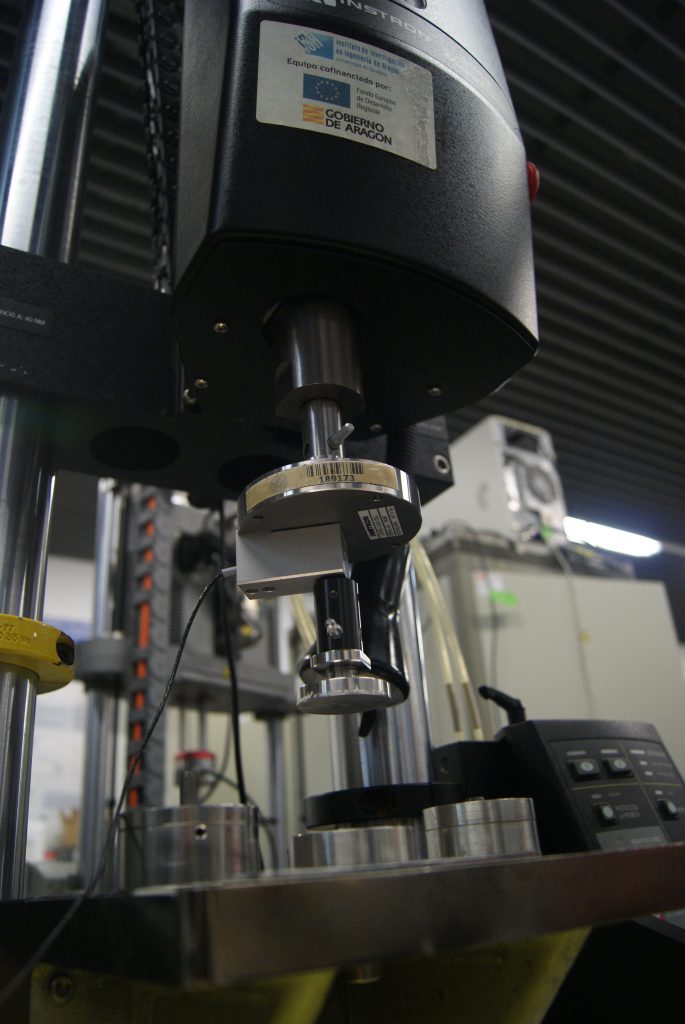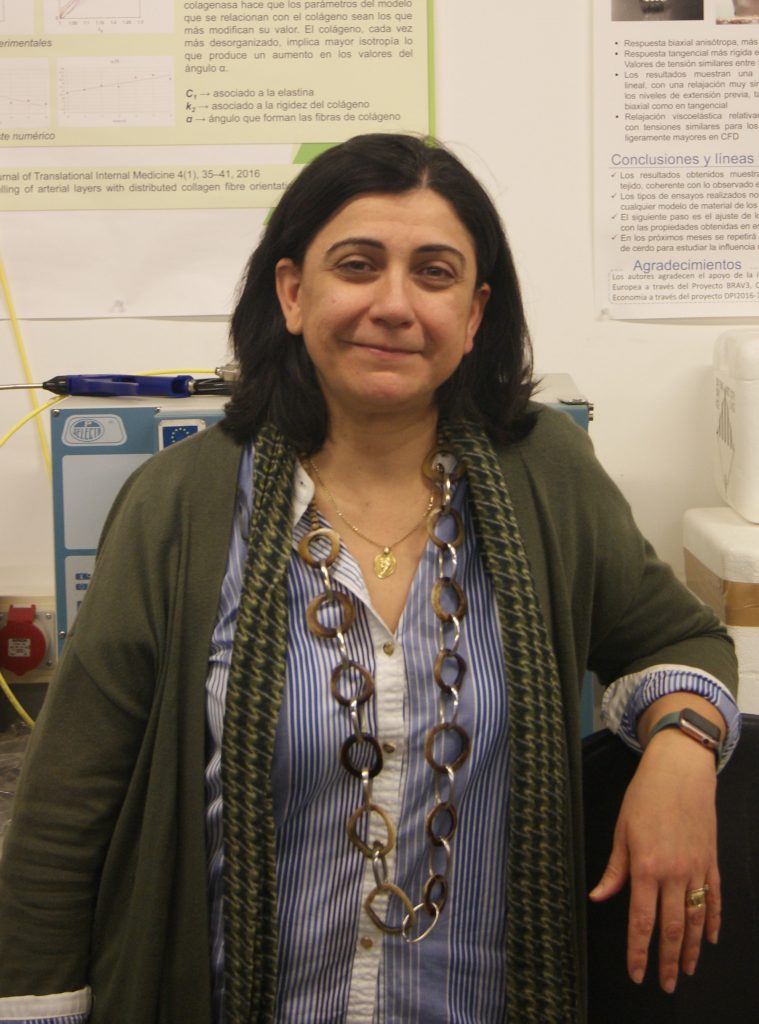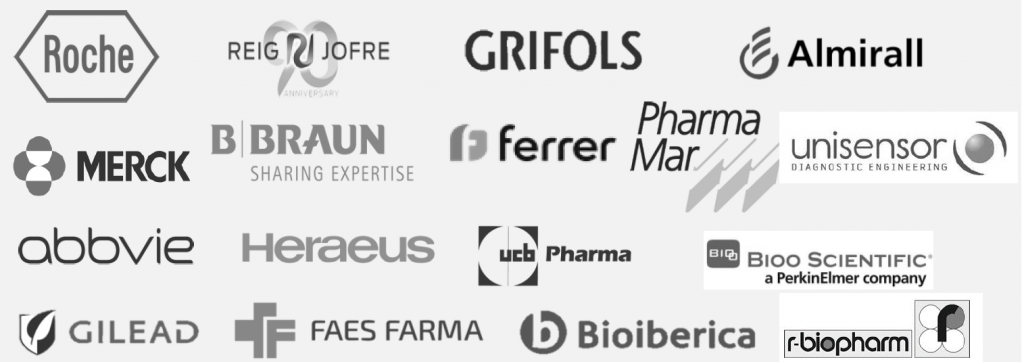
Prof. Peña gives us her insightful point of view in overcoming challenges, embracing passion, and cultivating collaborative success towards career estabilization.
February 2024, Unizar/CIBER-BBN, Zaragoza (Spain)
The echo of our footsteps returns from the high ceilings filled with electrical conduits and gas pipes. An alarm sounds in the distance, while the warmth of the Zen Garden located in the center of the R&D Building reminds us once again that peace and progress will never be at odds.
We continue forward across the maroon floor, towards one of the access gates that separate each wing of the building. After crossing it, and almost without warning, the echo disappears with the slam of the heavy security door behind us. Now, the noise of the machines muffles our voices and footsteps as we walk through one of the many laboratories of the building. The numerous panels and posters, along with the bustling activity, make it clear that this is a place where science is the undisputed protagonist.

With a strangely welcoming feeling, we enter the spacious laboratory of Professor Estefanía Peña. The light in the room is bright, neutral, and aseptic like the complex machines that adorn it. High-precision devices, some venerable with a history of witnessing scientific breakthroughs, and others, the product of cutting-edge engineering, now contributing to new frontiers.
Two people await us in the room: a young technician, quiet and discreet, and his boss, a woman who, despite, or perhaps as a consequence of her undeniably established scientific career, radiates youthfulness, energy, and determination. Both kindly welcome us to their realm, where they rule over the complex machines. The woman quickly grabs the reins of the conversation, filling the room with her overwhelming, yet approachable personality.
Prof. Peña introduces herself: “Fany, just Fany is fine. That’s how everyone calls me.”
The interview begins.
Alright, Fany, tell us a little about yourself and your research group.
“My group focuses on computational modeling of the human body and pathologies. We also design implants and devices to correct pathologies. We work on real-time simulation and Artificial Intelligence.”
What motivated you to choose a career in research?
“Since I was very young, I’ve loved mathematics, physics, experimenting, asking questions like ‘why does the apple fall?’, and also because of the influence of my family.”
Could you share with us a bit about your research area and the projects you’re currently working on?
“My group is quite large and has three main lines of research: artificial intelligence applied to biological engineering, prosthetic design, lenses, muscle fatigue, and, in the case of those closest to me and Dr. Martínez Barca, the mathematical study of cardiovascular pathologies: myocardial infarction, how these lesions affect the heart, atheroma plaque, and devices to try to correct vessel obstruction. Recently, we’ve been working on modeling aneurysms in collaboration with groups from Val d’Hebron Hospital.”
Have you had any Eureka moments in your career? What do you consider to be your greatest achievement or contribution in your field at a professional or personal level?
“Probably my first doctoral thesis. Feeling capable of teaching and mentoring someone was a significant milestone for me. The topic was about carotid stents.”
What have been the biggest challenges you’ve faced as a woman in your research field?
“The biggest challenge has been balancing personal life, especially family life, with work. Especially when you’re young. I’m someone who, when I dedicate time to something, I dedicate it in full. Moreover, the moment when you have to dedicate much more time to a research career starts right after you finish your doctoral thesis until you reach professional stabilization. And that’s usually the period when you start a family. That’s a key moment and the greatest difficulty that, I believe, 99.9% of female researchers face.”
How do you think these barriers can be overcome?
“To be honest, I acknowledge that the role of a mother is almost irreplaceable. However, I believe that society is still not prepared to understand that women, besides being mothers, also want to do other things. It’s not just a problem of task distribution; I think nowadays roles in motherhood and fatherhood are quite shared, especially among young people. I believe it’s more of a social issue, meaning that even in terms of state aid aimed at encouraging motherhood, it’s scarce. Imagine, in other countries it’s inconceivable not to have a daycare or a similar service at the workplace. I think the role of a mother is very important, but…”
…having a daycare at work helps, right?
“It helps quite a bit, yes.”

“The most important thing in your professional career is to dedicate yourself to something you love (…) that’s incredibly important from a professional point of view.”
—Prof. Estefanía Peña, Scientific Coordinator of Unit 13.
What advice would you give to young women considering pursuing a career in science?
“Go for it! The most important thing in your professional career is to dedicate yourself to something you love. I mean, family and your personal life bring the greatest happiness, yes, but I know many people who work in something they don’t like, either because they haven’t found work anywhere else or because they opted to study something easy back then, even if they didn’t like it that much… I believe that working in something you love allows you to do things much better, and that’s incredibly important from a professional point of view. Study and do what you love, and if you love science… go for it!”
And what about all those girls who doubt?
“Yes… the truth is, from the talks I’ve given at schools, the response from girls often is ‘Phew!’ And usually, the female ratios, in my case as an engineering professor, are very, very low. But success rates, the highest grades… there’s no distinction there. It’s a 50/50. That means there’s no added difficulty, beyond the intrinsic difficulty of a science career, which both men and women will feel equally. Probably women will have more advantage since, for whatever reason, we tend to be able to focus more and be, as we use to say in Aragon, ‘more stubborn’. It doesn’t really matter much if subjects are more difficult because when you really like what you do, you don’t mind dedicating more time to it.”
What support have you received throughout your career that has been particularly useful?
“My colleagues, without a doubt. I’ve had people I’ve worked with and continue to work with since I started my thesis. There are people I’m still working with whom I started working with 25 years ago. And I have the utmost confidence that if I’m on maternity leave, nothing will go wrong. Or that if one of my colleagues fails, the rest of us will always be there. That’s extremely important. I don’t think it’s necessary to mention specific names. Science is very collaborative, whether from a teaching or research perspective. I always say ‘tanto monta, monta tanto’.” [Interviewer’s Note: a historical idiomatic expression when both king and queen held equal authority and power in the newly unified kingdom of Aragón].
Very Aragonese phares as well.
“Yes, very Aragonese.”
Thank you very much for your time, Fany.
“Thank you very much, Gabriel.”
This is part of a series of interviews to several female researchers within the context of International Day of Women and Girls in Science 2024 and Woman’s Day 2024. For more interviews, visit our news section here.
Additional information:
The goal of NANBIOSIS is to provide comprehensive and integrated advanced solutions for companies and research institutions in biomedical applications. All of this is done through a single-entry point, involving the design and production of biomaterials, nanomaterials, and their nanoconjugates. This includes their characterization from physical-chemical, functional, toxicological, and biological perspectives (preclinical validation).
In order to access our biomedical Solutions, apply here.
NANBIOSIS has worked with pharmaceutical companies of all sizes in the areas of drug delivery, biomaterials and regenerative medicine. Here are a few of them:









